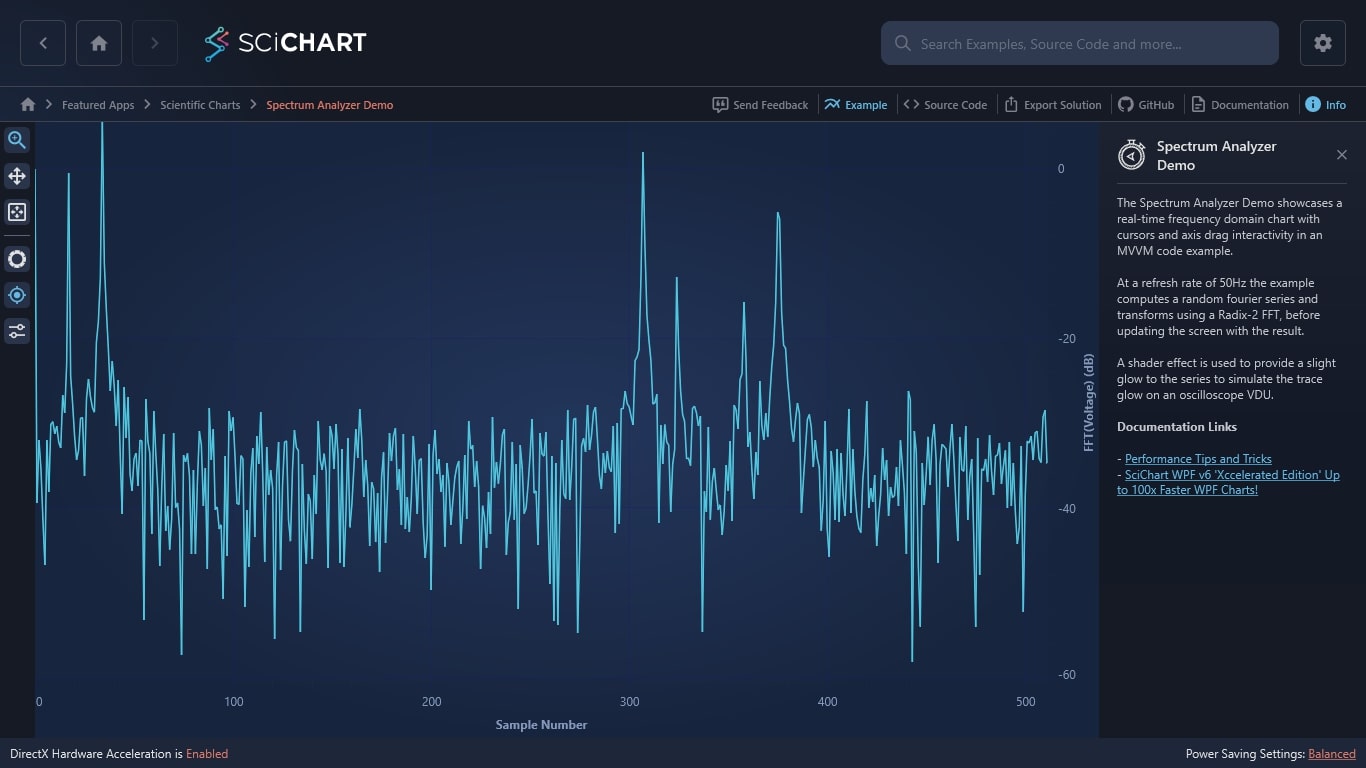WPF Chart - Examples
SciChart WPF ships with hundreds of WPF Chart Examples which you can browse, play with, view the source-code and even export each WPF Chart Example to a stand-alone Visual Studio solution. All of this is possible with the new and improved SciChart WPF Examples Suite, which ships as part of the SciChart WPF SDK.
The Spectrum Analyzer Demo showcases a real-time frequency domain chart with cursors and axis drag interactivity in an MVVM code example.
At a refresh rate of 50Hz the example computes a random fourier series and transforms using a Radix-2 FFT, before updating the screen with the result.
A shader effect is used to provide a slight glow to the series to simulate the trace glow on an oscilloscope VDU.
Documentation Links
– Performance Tips and Tricks
– SciChart WPF v6 ‘Xccelerated Edition’ Up to 100x Faster WPF Charts!
The C#/WPF source code for the WPF Chart Realtime FFT Spectrum Analyzer example is included below (Scroll down!).
Did you know you can also view the source code from one of the following sources as well?
- Clone the SciChart.WPF.Examples from Github.
- Or, view source in the SciChart WPF Examples suite.
- Also the SciChart WPF Trial contains the full source for the examples (link below).


